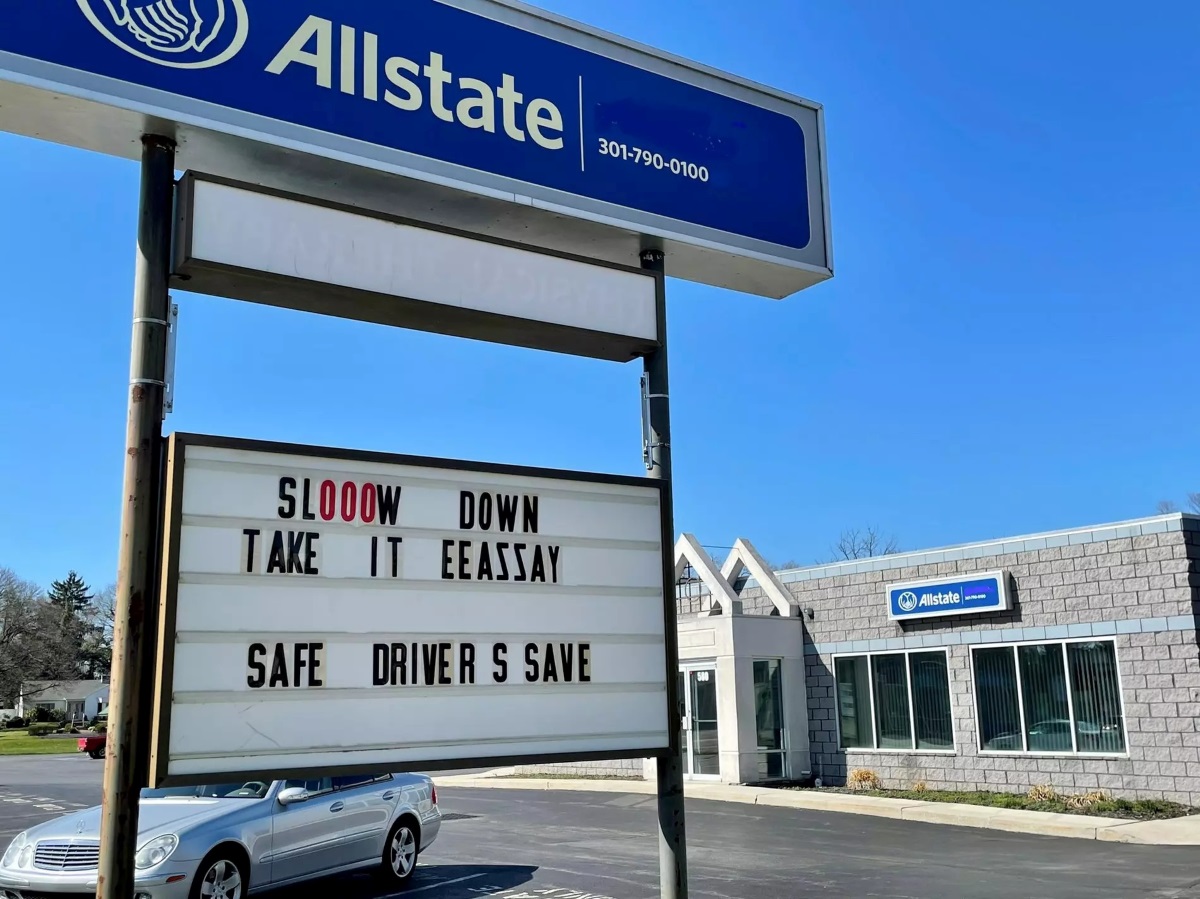Home>Finance>Is There A Grace Period For Car Insurance When You Buy A Car?


Finance
Is There A Grace Period For Car Insurance When You Buy A Car?
Published: February 19, 2024
Learn about the grace period for car insurance when purchasing a new vehicle. Understand the finance implications and stay protected on the road.
(Many of the links in this article redirect to a specific reviewed product. Your purchase of these products through affiliate links helps to generate commission for LiveWell, at no extra cost. Learn more)
Table of Contents
Introduction
Understanding Car Insurance Grace Periods
When purchasing a new car or transitioning your existing insurance to a new vehicle, it's crucial to understand the concept of a grace period in the realm of car insurance. A grace period refers to the length of time during which an insurance policy remains in effect after the premium is due but unpaid. This period is designed to offer policyholders a buffer to make their payment without experiencing an immediate lapse in coverage. However, it's essential to comprehend the specifics of these grace periods, particularly in the context of purchasing a new car, to ensure that you remain adequately protected on the road.
Car insurance grace periods are a fundamental aspect of insurance policies, providing a degree of flexibility to policyholders in managing their payments while maintaining continuous coverage. Understanding the nuances of these grace periods is crucial for anyone purchasing a new vehicle or transitioning insurance to a different car. This article delves into the intricacies of car insurance grace periods, elucidating their significance and implications in various scenarios. Whether you're a seasoned driver or a first-time car owner, comprehending the dynamics of grace periods is indispensable for making informed decisions regarding your car insurance coverage.
Understanding Car Insurance Grace Periods
Car insurance grace periods are a crucial component of an insurance policy, offering a buffer for policyholders to make their premium payments without facing an immediate lapse in coverage. These grace periods vary by insurer and state regulations, typically ranging from a few days to a month. During this period, the policy remains active, providing coverage for the policyholder.
It’s important to note that while the grace period allows for delayed payments, it does not extend or alter the original terms of the insurance policy. Any claims or incidents that occur during the grace period may be subject to the outstanding premium. Therefore, it’s imperative for policyholders to adhere to the payment schedule to avoid potential coverage gaps.
Additionally, the specifics of a grace period can differ based on the type of policy and the insurance provider. For instance, some insurers may offer a shorter grace period for late payments on new policies compared to renewals. Understanding these variations is essential for policyholders to effectively manage their insurance obligations and maintain continuous coverage.
Furthermore, grace periods are designed to provide a degree of flexibility to policyholders, acknowledging that unforeseen circumstances or financial constraints may impact timely premium payments. However, it’s crucial for policyholders to communicate with their insurance provider if they anticipate a delay in payment. By proactively addressing payment concerns, policyholders can potentially negotiate alternative arrangements or avoid the risk of a coverage lapse.
Overall, understanding car insurance grace periods is essential for policyholders to navigate the dynamics of premium payments and coverage continuity. Whether purchasing a new car or transitioning insurance to a different vehicle, being well-informed about grace periods empowers policyholders to make sound decisions regarding their insurance obligations and ensure uninterrupted coverage on the road.
Grace Periods for New Car Purchases
When purchasing a new car, it’s essential to consider the implications of car insurance grace periods to ensure seamless coverage. In the context of a new car purchase, the grace period for securing insurance coverage varies based on the insurance provider and state regulations. It’s important for new car owners to promptly address insurance considerations to avoid potential gaps in coverage.
Some insurance providers offer automatic coverage extensions for new vehicle purchases, allowing policyholders a specified period, typically around 7 to 30 days, to add the new car to their existing policy or secure a separate insurance plan. This grace period aims to accommodate the administrative process of updating insurance details for the new vehicle without immediately jeopardizing coverage.
During this grace period, the new car is typically covered under the policyholder’s existing insurance, provided that the policy includes automatic coverage for new acquisitions. It’s crucial for policyholders to review their insurance policy to ascertain whether such provisions are included and the specific duration of the grace period for new car purchases.
However, it’s important to note that the coverage extension for new car purchases may vary among insurance providers, and not all policies automatically extend coverage to newly acquired vehicles. In scenarios where the existing policy does not encompass automatic coverage for new car purchases, it is imperative for the policyholder to promptly secure insurance for the new vehicle to avoid driving uninsured.
Understanding the grace period for new car purchases empowers individuals to make informed decisions and take timely action to ensure continuous insurance coverage when acquiring a new vehicle. By proactively addressing insurance considerations and leveraging the grace period provided by some insurers, new car owners can navigate the transition smoothly and safeguard their vehicles with the necessary protection on the road.
Grace Periods for Transferring Insurance to a New Car
When transitioning insurance coverage to a new car, policyholders must consider the grace period provided by their insurance provider to facilitate a seamless transfer of coverage. The grace period for transferring insurance to a new vehicle varies among insurers and is influenced by state regulations, necessitating a clear understanding of the specific provisions within the policy.
Some insurance providers offer a grace period, typically ranging from 7 to 30 days, during which the existing insurance coverage extends to the new vehicle while the policyholder completes the necessary steps to transfer the insurance. This grace period aims to accommodate the administrative process of updating the policy details to reflect the new car without immediately disrupting coverage.
During this grace period, it’s essential for policyholders to promptly initiate the transfer of insurance to the new vehicle by updating the policy with the relevant details, such as the vehicle identification number (VIN) and other pertinent information. By adhering to the requirements within the grace period, policyholders can ensure that their new vehicle is seamlessly integrated into their existing insurance coverage without experiencing a lapse in protection.
However, it’s crucial to note that the specifics of the grace period for transferring insurance to a new car may vary based on the terms of the policy and the insurance provider. Some insurers may have distinct procedures and requirements for transferring insurance to a new vehicle, necessitating proactive communication and timely action from the policyholder to facilitate a smooth transition.
Understanding the grace period for transferring insurance to a new car empowers policyholders to navigate the process effectively and maintain continuous coverage during the transition. By leveraging the grace period provided by their insurer and promptly addressing the necessary steps to transfer insurance, policyholders can ensure that their new vehicle is adequately protected on the road without encountering coverage gaps.
What Happens if You Drive Without Insurance During the Grace Period?
Driving without insurance during the grace period can have serious legal and financial ramifications. While the grace period provides a buffer for policyholders to make late premium payments without an immediate lapse in coverage, it does not authorize driving without valid insurance. If an individual drives without insurance during the grace period, they are subject to potential penalties and risks that can significantly impact their financial well-being and legal standing.
One of the primary consequences of driving without insurance during the grace period is the potential for legal repercussions. In many states, driving without valid insurance is a violation of the law, leading to penalties such as fines, license suspension, and even vehicle impoundment. These legal consequences can have enduring implications, affecting the individual’s driving privileges and incurring substantial financial penalties.
Furthermore, driving without insurance during the grace period exposes individuals to significant financial risks in the event of an accident or traffic violation. Without valid insurance, individuals may be personally liable for any damages, medical expenses, or legal costs resulting from an accident, placing them in a precarious financial situation. Moreover, the absence of insurance coverage during this period can exacerbate the repercussions of any traffic violations or accidents, potentially leading to long-term financial strain.
It’s essential for policyholders to recognize that the grace period is not a license to drive uninsured but rather a safeguard against an immediate lapse in coverage due to late payments. To avoid the potential legal and financial ramifications of driving without insurance, it is imperative for individuals to promptly address any payment concerns and communicate with their insurance provider to ensure continuous coverage.
Ultimately, driving without insurance during the grace period undermines the fundamental purpose of insurance – to provide financial protection and legal compliance. By understanding the significance of maintaining valid insurance coverage and adhering to the terms of the policy, individuals can mitigate the risks associated with driving uninsured and safeguard their well-being on the road.
Conclusion
Car insurance grace periods play a pivotal role in providing policyholders with flexibility in managing their premium payments while maintaining continuous coverage. Whether purchasing a new car or transferring insurance to a different vehicle, understanding the nuances of grace periods is essential for navigating the intricacies of insurance coverage effectively.
By comprehending the implications of grace periods for new car purchases, individuals can make informed decisions and take timely action to ensure seamless insurance coverage for their vehicles. Leveraging the grace period provided by some insurers empowers new car owners to address insurance considerations without encountering coverage gaps, thereby safeguarding their vehicles on the road.
Similarly, recognizing the grace period for transferring insurance to a new car enables policyholders to facilitate a smooth transition of coverage, ensuring that their new vehicle is seamlessly integrated into their existing insurance policy without experiencing a lapse in protection. Proactive communication and adherence to the requirements within the grace period are instrumental in maintaining uninterrupted coverage during the transfer process.
However, it’s crucial for individuals to refrain from driving without insurance during the grace period, as this can lead to severe legal and financial repercussions. The grace period is not a license to drive uninsured but rather a safeguard against immediate coverage lapses due to late payments. By prioritizing timely premium payments and adhering to the terms of their insurance policy, individuals can mitigate the risks associated with driving uninsured and uphold legal compliance.
In essence, a comprehensive understanding of car insurance grace periods empowers policyholders to navigate insurance-related transitions and payment obligations effectively, ensuring continuous coverage and compliance with legal requirements. By proactively engaging with their insurance provider and staying informed about the specific provisions within their policy, individuals can safeguard their vehicles and financial well-being on the road.














